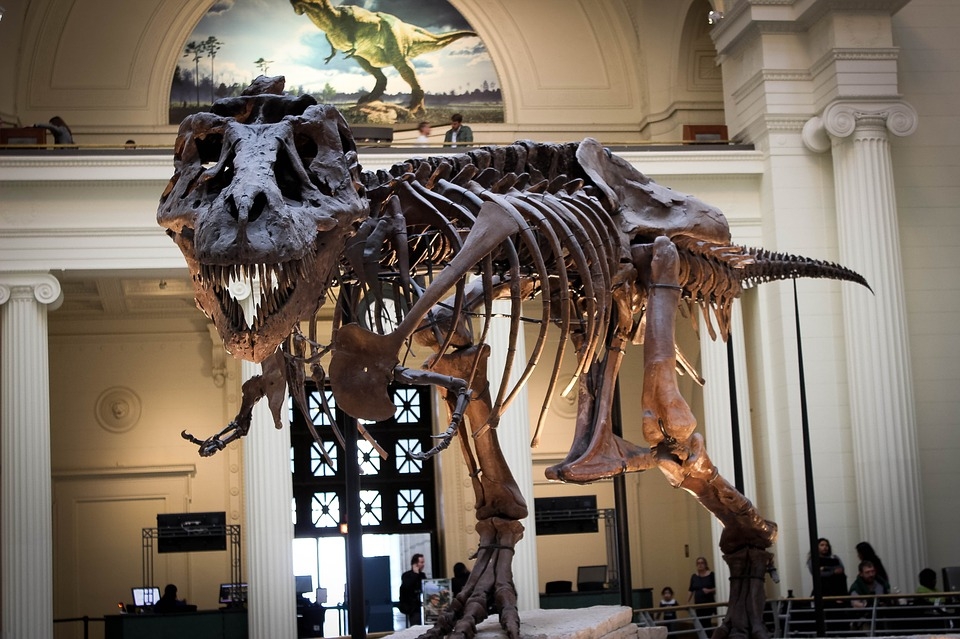There is still more to discover when it comes to learning about the creatures that once roamed the Earth, known as the dinosaurs. Recently, a new report reveals that paleontologists have discovered a new species.
Express reports that scientists have discovered a new dinosaur species. The species is named spinosaurus and measures up to 60 feet high, making it bigger than the tyrannosaurus rex. Scientists believe it may have been inhabiting what may now be North Africa after its fossils were discovered in Egypt for the first time back in 1915. However, proof of the existence of the mysterious dinosaur was destroyed during World War II.
Expert Nizar Ibrahim went on an expedition to track down any remnants of the mysterious species and found it back in 2017. In the National Geographic documentary of the dinosaur, it was revealed that Cristiano Dal Sasso of the Natural History Museum in Italy was suddenly contacted by a fossil trader and was sent a collection of large bones from Morocco and was likely smuggled out illegally.
After looking closely at the bones, Dal Sasso found that it all appeared to come from one single specimen, and resembled the long-lost spinosaurus. Dal Sasso reached out to Ibrahim to inform him about the acquisition. Dal Sasso traveled to Italy to see the collection himself and convinced that he saw the remains of the spinosaurus, he arranged for the bones to be brought to Chicago for further analysis.
Along with the discovery of a long-lost new species of dinosaurs, a group of researchers also found a disease that was present in a dinosaur that also affects humans to this day. The researchers diagnosed a hadrosaur, a herbivorous species that lived 75 million years ago. The hadrosaur they found appeared to have suffered from a rare form of cancer.
They discovered the presence of the supposed disease after examining two of the bones. The researchers found two cavities and lesions, and thus theorized that this may be a result of tumors linked to Langerhans cell histiocytosis or LCH. This particular disease can cause tumors to form in various tissues within the body.



 A Nasa rover has reached a promising place to search for fossilised life on Mars
A Nasa rover has reached a promising place to search for fossilised life on Mars  Our survey of the sky is uncovering the secrets of how planets are born
Our survey of the sky is uncovering the secrets of how planets are born  Orbital resonance − the striking gravitational dance done by planets with aligning orbits
Orbital resonance − the striking gravitational dance done by planets with aligning orbits  The brightest object in the universe is a black hole that eats a star a day
The brightest object in the universe is a black hole that eats a star a day  Alpha, beta, theta: what are brain states and brain waves? And can we control them?
Alpha, beta, theta: what are brain states and brain waves? And can we control them?  Archeoastronomy uses the rare times and places of previous total solar eclipses to help us measure history
Archeoastronomy uses the rare times and places of previous total solar eclipses to help us measure history  Six space missions to look forward to in 2024
Six space missions to look forward to in 2024  Could a telescope ever see the beginning of time? An astronomer explains
Could a telescope ever see the beginning of time? An astronomer explains  What is minoxidil, the anti-balding hair growth treatment? Here’s what the science says
What is minoxidil, the anti-balding hair growth treatment? Here’s what the science says  Customizing mRNA is easy, and that's what makes it the next frontier for personalized medicine − a molecular biologist explains
Customizing mRNA is easy, and that's what makes it the next frontier for personalized medicine − a molecular biologist explains  Black hole, neutron star or something new? We discovered an object that defies explanation
Black hole, neutron star or something new? We discovered an object that defies explanation  Why some people don't trust science – and how to change their minds
Why some people don't trust science – and how to change their minds  Spacesuits need a major upgrade for the next phase of exploration
Spacesuits need a major upgrade for the next phase of exploration  Eggs from men, sperm from women: how stem cell science may change how we reproduce
Eggs from men, sperm from women: how stem cell science may change how we reproduce  The mystery of consciousness shows there may be a limit to what science alone can achieve
The mystery of consciousness shows there may be a limit to what science alone can achieve 






























